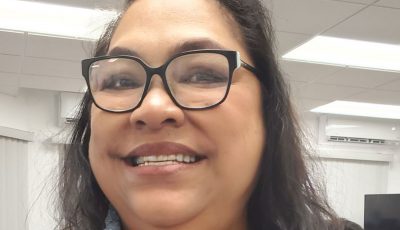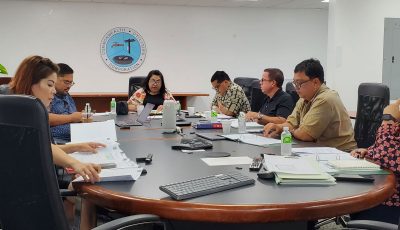CUC: Tap water is drinkable
Despite its salty taste, water flowing through the pipes of the Commonwealth Utilities Corp. is drinkable, according to CUC Water/Wastewater Division deputy executive director William Gilmore.
“Based on the water quality guidelines set by the Bureau of Environmental and Coastal Quality and the U.S. Environmental Protection Agency have laid for us to meet, CUC water quality passed and is therefore potable, which means it’s safe to drink it from the tap,” he said in the recently released 2016 CUC Water Quality Report.
The report’s objective is to inform everyone about the water that CUC delivers from the water source down to the water that comes out of faucets.
“Our water supply comes from wells and springs. Each of those has different water quality requirements that we review, to meet the expectation that the supply we are treating is appropriately clean and the level of contaminants are kept to the minimum levels as required by EPA,” said Gilmore.
CUC currently uses chlorination to treat its water. Chlorination is the process of adding chlorine to water. This system is maximized to kill certain bacteria and microorganisms that are not good for consumption.
“There are contaminants in the water source that are not harmful, like chlorine. We use chlorine to treat the water and make sure that pathogens (bacteria, virus and other microorganism) are eliminated. After treatment, we also rely on residue that remains in the water because it helps keep the pathogens and contaminants out. A low dose of residual elements is not harmful,” he said.
“The treatment we currently provide to our water is the kind that will make people welcome the idea they can drink water from the tap. But most of the time, the issue is preference. People find that tap water can be unpleasant because of the high chloride, that it tastes a little salty. As a result, most people do not rely on it as their source for drinking water.
“Our vision is to try to improve that,” added Gilmore.
The 2016 CUC Water Quality Report is an annual obligation set by the EPA that goes back to 1996. The timeline of the water samples that were gathered were from Jan. 1, 2016, to Dec. 31, 2016, and the results were released last April.
“It is valuable information. The public has the right to know the type of quality and work and supply that we are providing to them. The purpose of the water quality report is to actually look at all the sources of water we use,” said Gilmore.
Currently, CUC constantly tests water quality and makes sure it meets requirements. Scientists and laboratory technicians are the persons who prepare and evaluate the tests.
“The difficulties we experienced from Soudelor helped us improve and it makes us in a better position to handle situations like that. We aim to add on the improvements to the quality of life. We are thinking very long term for Saipan, Rota, and Tinian because when utilities make decisions about things, the effect should be for a long time. CUC is trying to be smart and we make sure that the team that discusses these matters is in the same vein. We are always thinking long term,” said Gilmore.



























